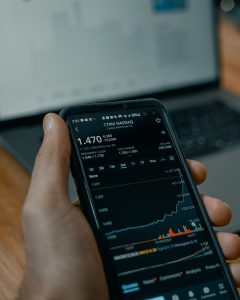Forex trading has become increasingly popular in recent years, with more and more people turning to the financial markets to make money. One of the key concepts in forex trading is the idea of contracts, or contracts for difference (CFDs). In this article, we’ll explore what contracts are in forex trading and how they work.
What Are Contracts?
A contract is a type of financial instrument that allows traders to speculate on the price movements of an underlying asset, such as a currency pair, stock index, or commodity. Contracts are essentially agreements between two parties – the buyer and the seller – that one party will pay the other a certain amount of money if the price of the underlying asset moves in a certain direction.
In forex trading, contracts are typically referred to as CFDs. CFDs allow traders to speculate on the movements of currency pairs without actually buying or selling the underlying currencies. Instead, traders buy or sell a contract that represents the value of the underlying currency pair.
For example, let’s say that you believe the euro is going to increase in value relative to the US dollar. You could buy a CFD that represents the euro/dollar currency pair. If the value of the euro does indeed increase, the value of your CFD will also increase, and you can sell it for a profit. If the value of the euro decreases, however, the value of your CFD will decrease, and you may need to sell it for a loss.
How Do Contracts Work?
Contracts are typically traded on margin, which means that traders only need to put up a small percentage of the total value of the contract to open a position. This allows traders to take on larger positions than they would be able to if they were trading the underlying asset directly.
For example, if you wanted to buy €10,000 worth of euros, you would need to have €10,000 in your trading account. However, if you wanted to buy a CFD that represents €10,000 worth of euros, you may only need to put up a fraction of that amount as margin.
Contracts are also typically traded on leverage, which means that traders can control larger positions than they would be able to if they were trading the underlying asset directly. Leverage allows traders to amplify their gains, but it also amplifies their losses.
For example, if you had €1,000 in your trading account and you wanted to buy €10,000 worth of euros, you may be able to do so with a leverage ratio of 10:1. This means that you would only need to put up €1,000 as margin, and the broker would lend you the remaining €9,000. If the value of the euro increased by 1%, your profit would be €100 (€10,000 x 1%). However, if the value of the euro decreased by 1%, your loss would be €100, which is equal to your entire trading account.
Conclusion
Contracts are a key concept in forex trading, and they allow traders to speculate on the price movements of an underlying asset without actually buying or selling that asset. Contracts are typically traded on margin and leverage, which allows traders to take on larger positions than they would be able to if they were trading the underlying asset directly. However, trading on margin and leverage also amplifies the risk of losses, so it’s important for traders to understand the risks involved and to manage their positions carefully.






